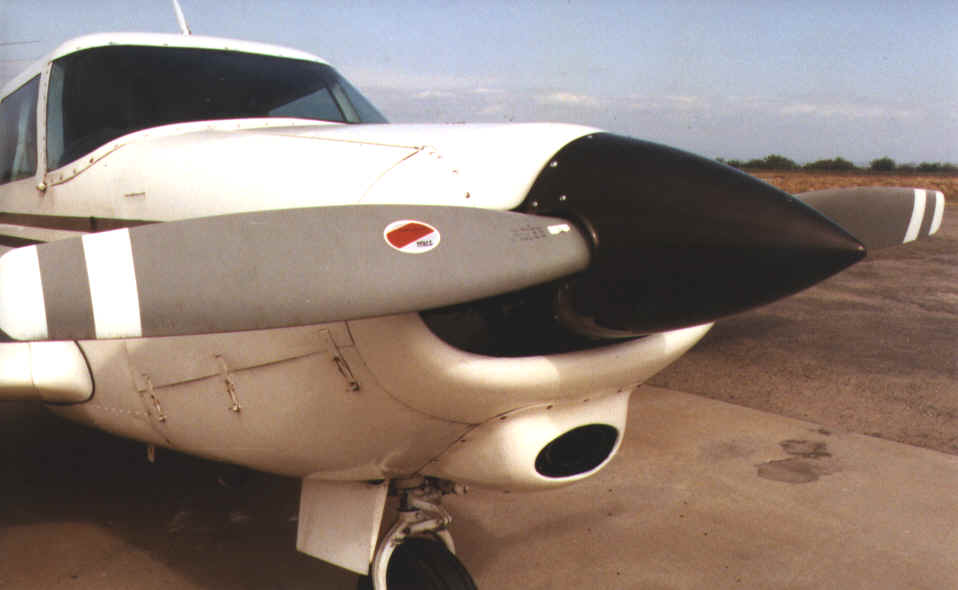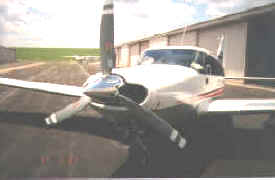You are using an out of date browser. It may not display this or other websites correctly.
You should upgrade or use an alternative browser.
You should upgrade or use an alternative browser.
Why a 3-bladed prop?
- Thread starter killbilly
- Start date
ppragman
No pasa nada.
Elementary question to many of you, I'm sure.
What's the advantage of having a 3-bladed prop vs. a 2-bladed on a piston single?
Its quiter, and has more drag, so you can slow down a little faster. Though it doesn't seem to have the get up and go that a 2 bladed prop has.
killbilly
Vocals, Lyrics, Triangle, Washboard, Kittens
Its quiter, and has more drag, so you can slow down a little faster. Though it doesn't seem to have the get up and go that a 2 bladed prop has.
Is that the only reason?
You see 3-bladed props on the higher performance singles. Cirrus, Cessna's larger ones (182, 210, 400), Mooneys...
I'd heard they were quieter, and I'm curious about why that is, as well.
tgrayson
New Member
You see 3-bladed props on the higher performance singles.
People buy three-bladed props because they tend to improve takeoff and climb performance. Cruise sometimes suffers. They're quieter due to reduced tip velocities. A shorter blade moving at 2700 RPM won't be moving as fast as a longer blade at the same speed.
And, almost everyone agrees, three-bladed props look cooler.
ppragman
No pasa nada.
People buy three-bladed props because they tend to improve takeoff and climb performance. Cruise sometimes suffers. They're quieter due to reduced tip velocities. A shorter blade moving at 2700 RPM won't be moving as fast as a longer blade at the same speed.
And, almost everyone agrees, three-bladed props look cooler.
Big time, in Inland's 207s it was about 7-10kts.
As for takeoff performance, I've heard mixed reviews, I've heard somepeople say that the extra drag of the third blade slows your acceleration slightly and leaves you in the same boat you were in before, however climb performance once you've left the ground is definitely better.
They do look much cooler compare this:

with this:

tgrayson
New Member
As for takeoff performance, I've heard mixed reviews
I'm sure it varies per installation. You don't know whether it will help until you bolt it on.
LineUpAndWait
Well-Known Member
More ground clearance with shorter blades too.
bdhill1979
Gone West
agreedAnd, almost everyone agrees, three-bladed props look cooler.
R
Roger, Roger
Guest
Yes.ALTHOUGH...single blade props are the most effecient design...but are there any?
PGT
Well-Known Member
beechpilot84
Well-Known Member
On a Piper Arrow it eliminates the restrictions on the RPM. With a two-bladed prop there is a limit on continuous operation within a certain RPM band, I forgot what it was but it's like 2200 to 2400 or something like that. At least on the 1970's models I was flying.
deadstick
Well-Known Member
People buy three-bladed props because they tend to improve takeoff and climb performance. Cruise sometimes suffers. They're quieter due to reduced tip velocities. A shorter blade moving at 2700 RPM won't be moving as fast as a longer blade at the same speed.
Agreed.
The PA46 originally had a 2-bladed prop. I think the scimitar design, when compared to the straight 3-bladed models, has reduced the noise, some drag, etc so that the pro/con gap between the 2- and 3-bladed props has been narrowed.
...and the 3-bladed scimitar looks WAY cooler.:bandit:
///AMG
Well-Known Member
On a Piper Arrow it eliminates the restrictions on the RPM. With a two-bladed prop there is a limit on continuous operation within a certain RPM band, I forgot what it was but it's like 2200 to 2400 or something like that. At least on the 1970's models I was flying.
Interesting, I remember having the same restriction on 3-bladed Arrows I have flown. Maybe someone just hadn't gotten the memo where I was flying or something
Minuteman
I HAVE STRONG OPINIONS ABOUT AUTOMOTIVE LIGHTING!
I just figured more blades was the best way to transmit more power when you have a restriction on the blade length and, to a lesser degree, the range of RPMs (torque-y versus spinny ... what kind of RPMs did the Thielerts turn?).
But am I understanding correctly there is sometimes a choice of two or three-bladed props for the same size engine?
But am I understanding correctly there is sometimes a choice of two or three-bladed props for the same size engine?
Blackhawk
Well-Known Member
Yes. Sometimes it is an STC, sometimes it is part of the type certificate data sheet.I just figured more blades was the best way to transmit more power when you have a restriction on the blade length and, to a lesser degree, the range of RPMs (torque-y versus spinny ... what kind of RPMs did the Thielerts turn?).
But am I understanding correctly there is sometimes a choice of two or three-bladed props for the same size engine?
Blackhawk
Well-Known Member
You may need to look at the STC or the type data sheet for the new limits. On my 8KCAB the RPM indicator still has the old limits marked on it, but the type data sheet removes the intermediate RPM limit and increases the maximum RPM.Interesting, I remember having the same restriction on 3-bladed Arrows I have flown. Maybe someone just hadn't gotten the memo where I was flying or something
I've seen the same thing with other airplanes... for example with some 172s Vfe 10 degrees is 110 knots, yet many pilots assume the limit is 95 knots.

![Acropage%231[1].pdf - Adobe Reader.JPG](/forums/data/attachments/2/2265-77e75839827bc6a0d9915ede4342ef94.jpg?hash=d-dYOYJ7xq)